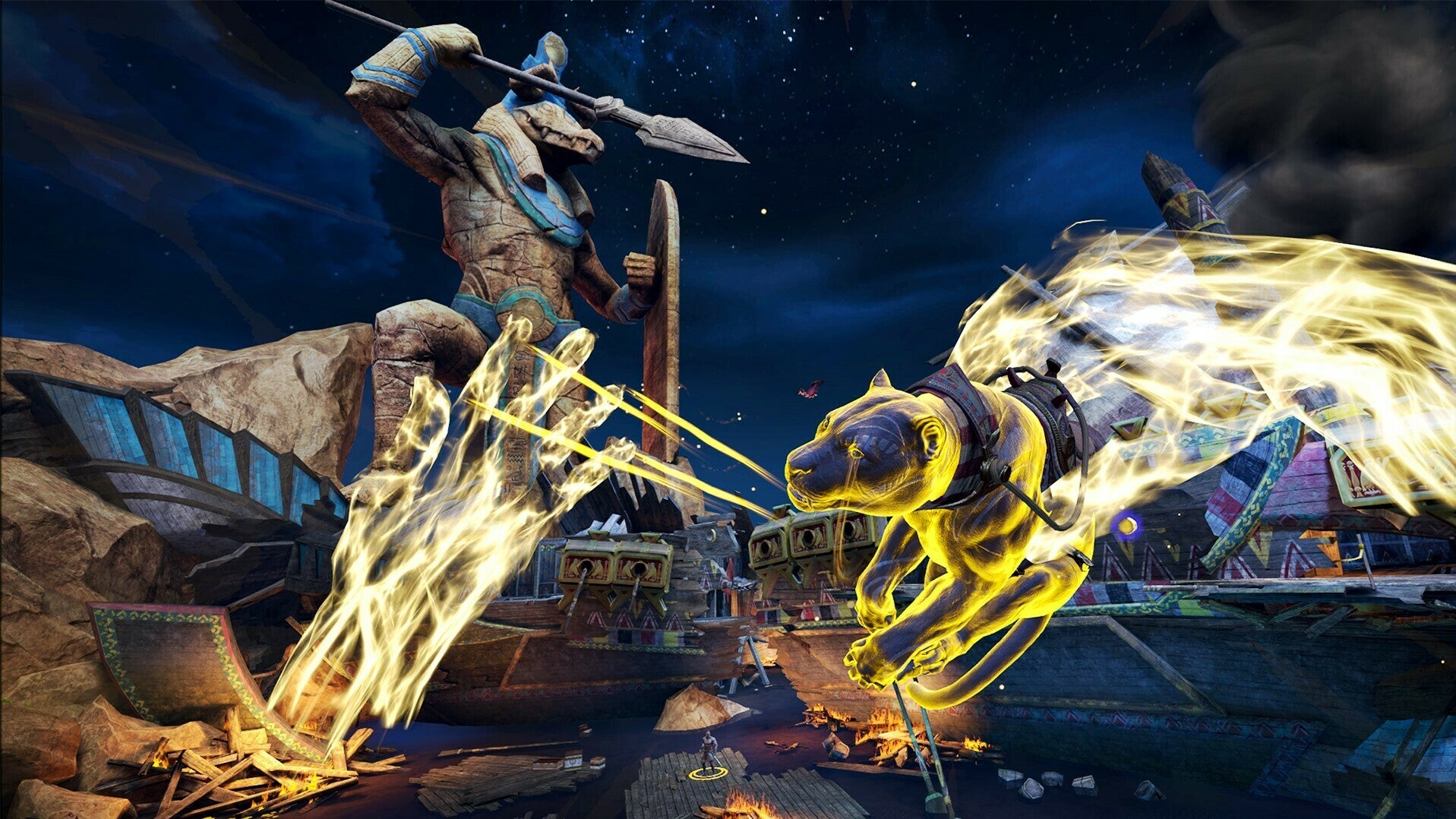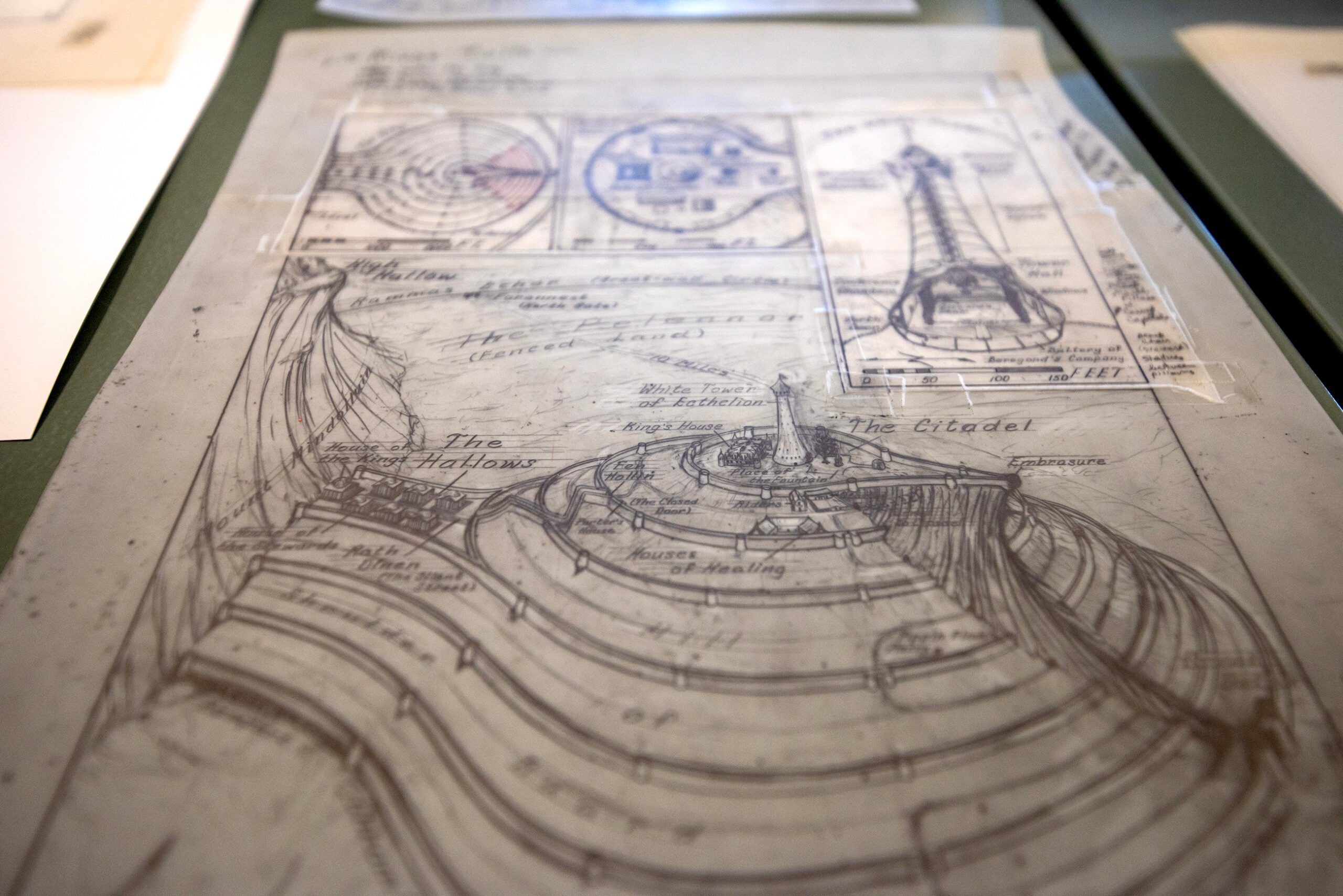I’m swinging from rafter to rafter in a multilevel temple with my whip swordwhen I’m suddenly attacked by flying enemies. I grapple one and pull it in close for a finishing move. Other adversaries start to surround me from behind, so I throw my boomerang axe and send it bouncing from one to the next. I do all of this without much thought — in Asgard’s Wrath 2, it’s easy to feel like a god.
After years of hard work from Sanzaru Games, Meta finally has their killer app. The game has set a new standard for standalone VR, knocking out my longtime favorites, Half-Life: Alyx and Skyrim, as my top virtual reality experience.
This sequel begins where the first game left off, with your player character, an upstart deity with the power to possess mortal bodies, betrayed by Loki and left in an illusory prison. But soon enough you’re whisked away to a fantastical Egypt where you first possess a tomb raider named Abraxas — who’s initially unhappy about the arrangement. But you have cosmic powers, Abraxas has a human body: together and later with other mortals, you’ll work to find the “Hero stones” that will reveal Loki’s whereabouts and put a stop to his mayhem.
News with a little more humanity
WPR’s “Wisconsin Today” newsletter keeps you connected to the state you love without feeling overwhelmed. No paywall. No agenda. No corporate filter.
Sanzaru Games harnessed some kind of dark magic to bring us the visuals in AW2, which were optimized for the Quest 2. I was in awe of the epic set pieces, gigantic enemies, and the allure of the Egyptian landscape. I was speechless when I first encountered a gargantuan ox-like beast towing a massive stone tower behind it. I finally noticed it after wandering through the desert curious about a strange bellowing sound. It’s one of those gaming moments that stays with you — and Asgard’s Wrath 2 has many such moments.
While this game isn’t as high fidelity as what you could play on a PC or PS VR2, it’s one of the prettiest things I’ve seen on the Quest. The big budget and attentive care extends to the story, writing, music, and voice acting, with a cast that includes stars like Forest Whitaker and Tessa Thompson.
The game’s also HUGE, roughly 130 hours if you include every quest and side quest. “Uncharted Rifts” (rogue-lite dungeons with asynchronous multiplayer) and “Cosmic Events” (themed events that pop up every month) add even more playtime and replay value.
Combat is fast and dynamic. Swordplay rewards timing with a strong emphasis on parrying, but there are plenty of other unique weapons for each character, each with their own fun playstyles. Throwing Abraxas’ boomerang-style axe and then pulling it back for double damage is incredibly satisfying. Cyrene’s squid harp really made me feel imbued with the power of the gods as each musical strum sent killer barbs at my enemies.
While you’ll spend most of the game as a mortal, you’ll occasionally transform into a giant God Form to, say, move large statues to help solve puzzles and to battle other gods. Followers you’ll meet along the way will also fight alongside you, each with unique special abilities. Handily, they can also transform into rideable mounts to help you traverse the landscape. You’ll need to show them attention and occasionally throw some food or potions their way to keep them happy — in turn, you’ll earn skill points and unlock character skins and additional dialogue scenes with your follower.
I’ve never seen a VR title with so much varied gameplay: it’s replete with combat, puzzles, climbing, swinging, riding, flying, fishing, mining, hunting, crafting, cooking, and even some mixed reality moments (for Quest 3 players) where enemies rip a hole in the fabric of your reality and start attacking you in your living room.
Impressive as it is, that variety can be overwhelming. For example, you can craft armor and upgrade weapons, but it didn’t occur to me to equip them on my character until I stumbled upon it in the menus (hours into my campaign). On one occasion the game suggested a quest marker to me out of order which led me to an un-passable point. Luckily, fast traveling makes it easy to jump back to the outpost or another part of the map if you get lost or stuck.
The first Asgard’s Wrath won acclaim for its graphics and world-building when it released in 2019 — although it had a much smaller audience at the time. While Asgard’s Wrath 2 had to make graphical concessions to run on standalone VR hardware — the gameplay, pacing, and story are a gift from the gods. Virtual reality enthusiasts have been begging for a longform AAA title made specifically for VR headsets like the Meta Quest, and here it is.
9(MDAyMjQ1NTA4MDEyMjU5MTk3OTdlZmMzMQ004))
© Copyright 2026 by NPR. To see more, visit https://www.npr.org.9(MDAyMjQ1NTA4MDEyMjU5MTk3OTdlZmMzMQ004))







